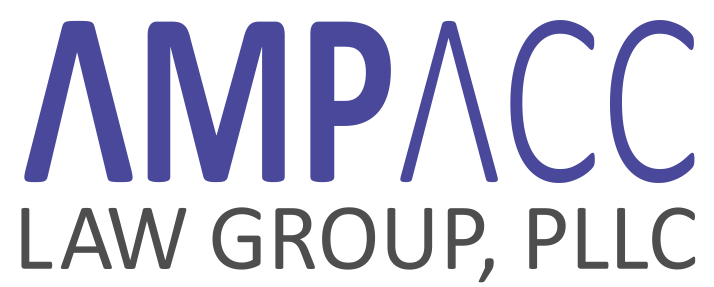Trademarks
- Summary Article: “What is a Federal Trademark Registration and Why Would I Need One?”
-
A trademark, put simply, is anything that associates a business with the goods and services it provides. A trademark can be used to protect your brand for goods or services. A trademark may be a word, phrase, design, color, scent, sound, or virtually anything else, that when used in association with goods or services, indicates the source of those goods or services to consumers. That is, a trademark is fundamentally tied to its use in connection with goods sold or services rendered.
Limited scope of state-level trademark protection. Because a trademark is defined in association with commercial activity—such as the sale of goods, the rendering of services, or “use in commerce” – state-level trademark rights begin the moment the mark is used in conjunction with the commercial activity. However, state-level trademark rights are limited. State-level trademark rights are limited geographically to the state in which you are doing business, and thus, cannot be used to prevent another business from using your trademark in a different state. In addition, although you can use state-level trademark rights to object to a competitor’s use of a similar marks based on your prior use of the mark, you cannot use these rights to recover money from the competitor. In addition, due to the legal fees involved, enforcing state-level trademark rights may be more costly than seeking a state or federal registration.
Benefits of federal registration. A federal trademark registration permits the trademark owner to sue infringers for damages, and serves as prima facie evidence of superior trademark rights. In practice, this means even if a competitor has used the trademark before you, they would likely have to hire legal counsel to establish that those rights are superior. In addition, if you have a federal registration, you can prevent competitors from seeking a similar registration in the first place on a national scale.
The federal trademark process. The federal trademark application process can be straightforward. To get started, the U.S. Patent and Trademark Office requires only an image of the mark and an intent to use the mark in commerce in association with specified goods or services. However, moving the application forward to registration can become complicated, depending on the issues involved. Nevertheless, the return on investment for registering your trademark cannot be overstated.
In short, a federal trademark registration can be a powerful tool in your arsenal of IP rights. Not only does it serve as a shield preventing competitors from seeking similar marks, it can also serve as a sword to enforce your brand.
- Summary Article “The Federal Trademark Application Process for U.S.-Based Applications”
Obtaining a federal trademark can be a straightforward process, but there are some pitfalls trademark owners should consider as they begin the process. This article provides a basic overview of the trademark process for U.S.-based applications.
Filing the Application. To file a federal trademark application, an applicant simply needs two things: a final image of the mark to be registered, and a true intent to use that mark in association with the sale of goods or the rendering of services. By filing an intent-to-use application, the applicant can preserve rights in the mark before using the mark in commerce. However, the USPTO will not grant a registration until the applicant has shown actual use of the mark. Alternatively, an applicant can also file a use-based application, based on the applicant’s current use of the mark in commerce.
Examination. Whether the application is use-based or intent-to-use, USPTO representatives examine the application usually within 3-6 months of filing. The USPTO assigns an Examining Attorney to the application, who looks primarily for potentially conflicting federal trademarks and confirms that the listed goods and services the applicant intends to use with the mark are adequately described, among other things. If there are problems with the application, the Examining Attorney will issue an Office Action describing the problems, and give the applicant 6 months to respond.
Publication for Opposition. If all issues in the application are properly addressed, the mark will be published in a 60-day publication period, within which potential competitors are given an opportunity to object to the mark’s registration. If a third party objects to registration during this period, the applicant may be able to negotiate a consent or other agreement prior to the end of the opposition period in order to proceed with registration. Otherwise, the third party will proceed with an opposition proceeding before the Trademark Trial and Appeal Board. During the opposition proceeding, the USPTO pauses the application process until a party establishes superior rights in the mark.
Proceeding to Registration. If no one files an opposition to the trademark application, the next step toward registration depends on whether the application is a use-based application or an intent-to-use application. The USPTO will automatically register a mark presented in a use-based application after an unopposed 60-day publication period. For an intent-to-use application, however, the USPTO will issue a Notice of Allowance. This triggers a 6-month period during which the applicant can file evidence of use of the mark in commerce to proceed to registration. If the applicant is not ready to file evidence of use at the end of the 6-month period, an extension can be obtained for another 6 months. Further extensions are available if the applicant is maintaining efforts to bring about use of the mark in commerce. However, the USPTO will not register the mark until the applicant actually uses the mark in commerce and files proof of use.
All told, from filing to registration, the typical trademark process takes about 1 year to complete. Although this is a short timeline compared to the federal patent application process, many issues may arise along the way that make legal counsel invaluable. If you are interested in preserving your rights in a trademark by filing a federal trademark application, please contact us.
